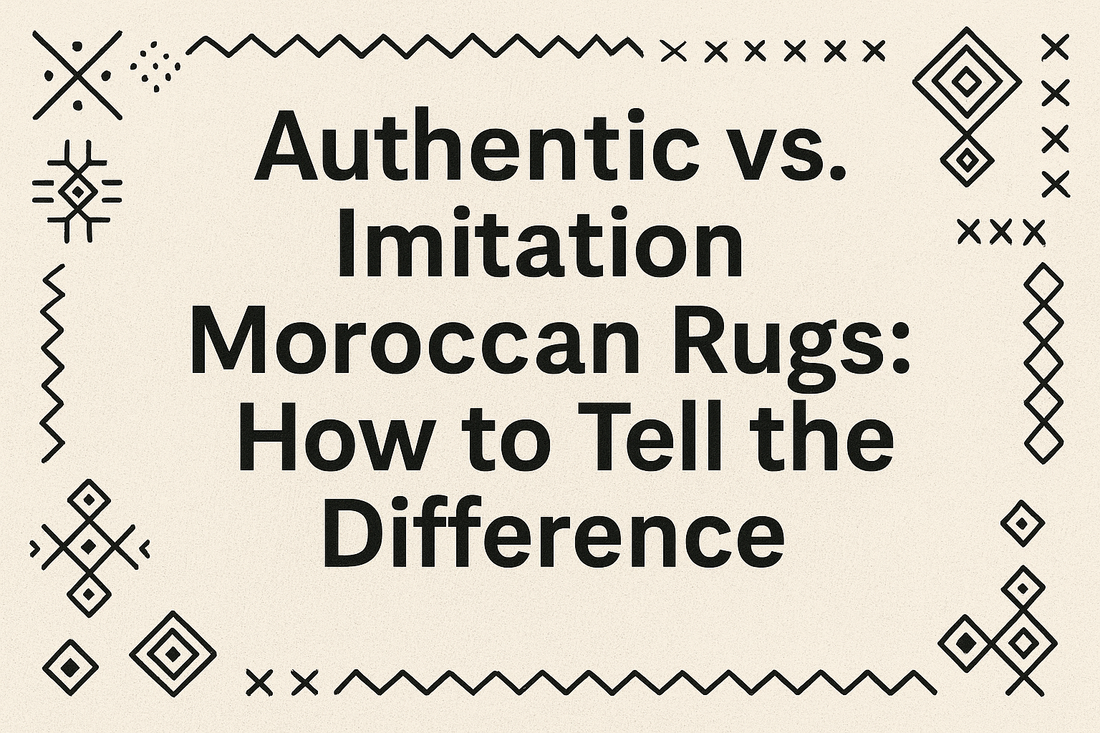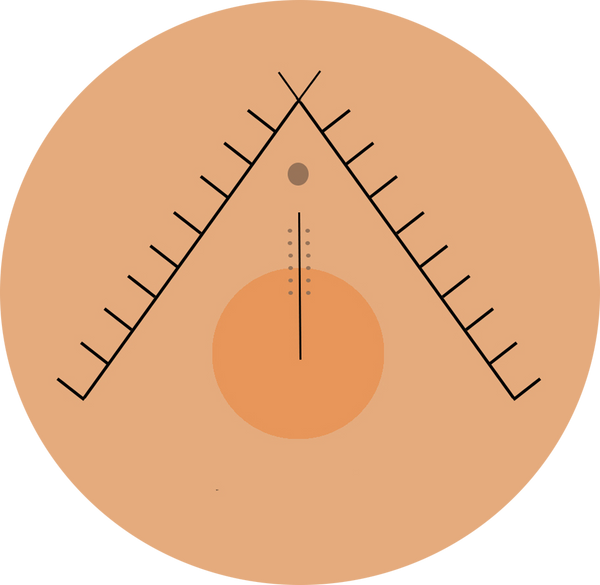
Authentic vs Imitation Moroccan Rugs
Share
Authentic vs. Imitation Moroccan Rugs: How to Tell the Difference
Moroccan rugs have become some of the most sought-after pieces in interior design. Their beauty, symbolism, and craftsmanship make them unique. But with demand increasing, imitations are everywhere. Knowing how to spot an Authentic vs Fake Rugs versus a fake is essential for buyers who value quality and heritage.
Why Authentic vs Fake Rugs Are So Special
Authentic vs Fake Rugs are handwoven by Amazigh (Berber) artisans in the Atlas Mountains. Each rug is unique, reflecting centuries of tradition. Designs often feature geometric motifs and symbolic patterns that carry cultural meaning. These rugs are woven from high-quality wool, offering both softness and durability. Because of their artistry and resilience, authentic Moroccan rugs are considered both cultural treasures and practical investments.

How Imitation Moroccan Rugs Are Made
Imitation rugs are mass-produced, often in factories outside Morocco. They are usually made from synthetic fibers instead of wool. While they may copy Moroccan patterns, they lack authenticity, durability, and symbolic depth. Machine-made rugs are cheaper, but they cannot replicate the texture, warmth, or individuality of authentic handmade pieces.
Many online stores now promote so-called “Moroccan-style rugs” like this one from Rugs USA – Adair Shag Rug. While the design may look appealing, it is important to know that these rugs are machine-made from synthetic fibers. They only imitate Moroccan patterns without carrying the deep symbolism or craftsmanship behind them. In contrast, an authentic Moroccan rug is handwoven by Berber artisans using natural wool, with each piece taking weeks or even months to complete. Real rugs show small irregularities, unique motifs, and natural warmth that factory-made versions can never replicate. While imitations may be cheaper, they wear out quickly and lack the durability, comfort, and cultural story that true Moroccan rugs bring into your home.
Key Signs of an Authentic Moroccan Rug
1. Material
Authentic Moroccan rugs use natural sheep’s wool. The texture feels warm, soft, and slightly uneven. Fake rugs often use polyester or acrylic, which feel cold and too smooth.
2. Weaving Technique
Handwoven rugs show slight irregularities in knots and edges. These imperfections prove authenticity. Imitation rugs are perfectly uniform, a sign of machine production.

3. Design and Pattern
In authentic rugs, designs carry meaning and vary from piece to piece. No two rugs are identical. Imitations often repeat identical patterns with no symbolic value.
4. Back of the Rug
Flip the rug over. On authentic pieces, the design is visible on the back, though less sharp. On fake rugs, the back looks glued or stitched with a stiff base.
5. Price and Provenance
Authentic Moroccan rugs represent time, skill, and natural craftsmanship. Their value comes from the artisan’s work and quality wool. While they may cost more than imitations, they are made to last for generations. To avoid fakes, always buy from trusted sellers and experts in Moroccan craftsmanship, like via our website and expertise.

Why Choose Authentic Moroccan Rugs
Authentic rugs are more than decorative items. They are works of art carrying Amazigh heritage and cultural symbolism. They are durable, easy to clean, and perfect for high-traffic areas. While imitations may save money upfront, they wear out quickly and lack the soul of the real thing. Investing in an authentic rug supports Moroccan artisans and keeps traditions alive.
Modern Uses of Authentic Moroccan Rugs
Today, authentic Moroccan rugs blend perfectly into both traditional and contemporary interiors. They add warmth to minimalist designs, character to modern lofts, and depth to bohemian spaces. Their durability makes them suitable for busy homes, while their symbolism enriches any décor with cultural meaning.
Conclusion
When comparing Authentic vs Fake Rugs, the differences are clear. Authentic rugs are handwoven, symbolic, and built to last. Imitations may copy the look but lack quality and heritage. For buyers seeking beauty, durability, and cultural depth, authentic Moroccan rugs remain the best choice. By choosing genuine pieces, you preserve Amazigh traditions while investing in timeless artistry.

